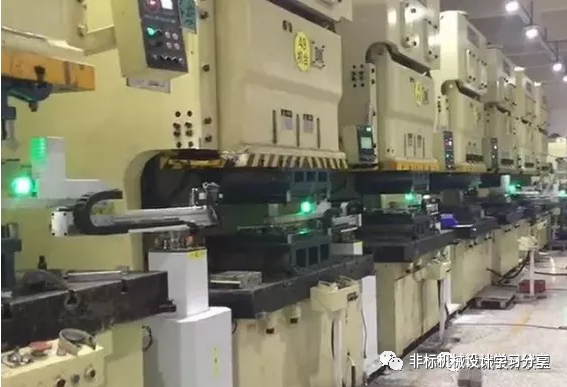13 steps in the design and manufacture of non-standard automation equipment
2022.05.27
At present, with the development of industry, the demand for non-standard automation equipment is increasing; non-standard automation equipment has now become an important auxiliary equipment in many industries. When we need non-standard automation equipment, then the design and manufacturing steps of non-standard automation equipment What is it like?

1. Determine development projects and understand customer needs, including product quality requirements, equipment production efficiency requirements, and equipment working environment
2. Analyze the product
1. Understand the production process of the product, the size requirements of all aspects of the product and the incoming materials
2. Communicate with customers the precautions in the production process of the product and the technical parameters of the place where the equipment is used
3. Formulate a plan
The engineering personnel discuss and analyze the equipment plan, the plan includes: equipment schematic diagram (overall schematic diagram, partial schematic diagram), introduction of each part of the mechanism, action description, equipment technical parameters
4. Program review
The audit team is composed of engineering personnel to audit the plan. The audit content includes: equipment feasibility assessment, equipment cost assessment, equipment production efficiency assessment, and structural feasibility assessment of each part
5. Program rectification
Correct the problems discussed in the program review.
6. The customer determines the design plan
The design plan is handed over to the customer, and the customer will finalize the plan according to their needs.
7. Design and development
The engineering department arranges engineers to design the mechanism, and make machine assembly drawings and parts drawings (parts are marked according to national standards)
Select executive components, electronic control accessories and list processing parts list, standard parts requisition, and action manual.
8. Institutional Audit
An audit team is formed by engineering personnel to review the designed drawings.
Nine, parts processing and standard parts procurement
10. Inspection and storage of processed parts and standard parts
11. Machine assembly
12. Machine debugging
13. Packaging and shipping
Non-standard automation design considerations:
1. For products that have been produced in the old-fashioned process. Put down your shelf, not only communicate with technical personnel, but also communicate with actual operation and manufacturing workers to understand the problems and ideas in the actual production process, and often there will be unexpected gains.
2. Analyze the conditions required for the preliminary design scheme. Product production process, formulate equipment technical parameters, clarify the comprehensive manufacturing cost that can be tolerated, compare the comprehensive performance of traditional manufacturing processes, etc., as detailed as possible.
3. Select the ideal processing orientation. Precautions: safety, humanization, cleaning of equipment, possibility of equipment combination, etc. I think it is the most important step in the design of non-standard equipment, and it has already reflected the advantages and disadvantages of the equipment.
4. Reasonable combination of functional parts. Note: Reasonable consideration is given to the possibility and versatility of upgrades. After all, we don't want to use it for exclusive use, and the other is useless.
5. The optimization of equipment, needless to say, takes the most time, but many designers are the least willing to spend time and energy. It is required to continue to optimize on the day when the equipment is completed.
Next:How to choose a sheet metal bending die?
Related Information
- Industry news
- The tap or drill bit breaks in the hole, how to fix it?
- Why do airplanes use rivets instead of welding?
- Why are engineering drawings all blueprints?
- How is a ping pong ball made? It turns out that it is made of two pieces of plas
- What to do if quality is abnormal? Doing these 3 things well is the key!
- Weekly News 9.7-9.13
- Huawei's three-fold screen is approaching, and the domestic supply chain is wait
- Innovative application of digital twin technology in integrated die-casting prod
- 5 types of carbide cutting tools, what are the differences? Save this article an
- Global manufacturing PMI in June was 49.5% | Weekly News 7.6-7.12
- Raw material defects | Machining special operations and practical cases 109
- No wonder Toyota stamping is so good: a day in the life of a Toyota stamping sho
- Analysis on the development trend and demand of China's mold industry
- How many types of sealing rings are there in machinery? What are they used for?
- Hangfa, Hangfa, a scar on the hearts of machine processing workers
- How to mill a large arc surface with a small cutter?
- Dynamics of the processing center of the process! What is the fundamental reason
- 500 ° C ultra -strong aluminum alloy! This problem is overcome
- How much do you know about the hometown of machine tools and molds, how much do

 BACK
BACK MT HOME
MT HOME Navbar
Navbar